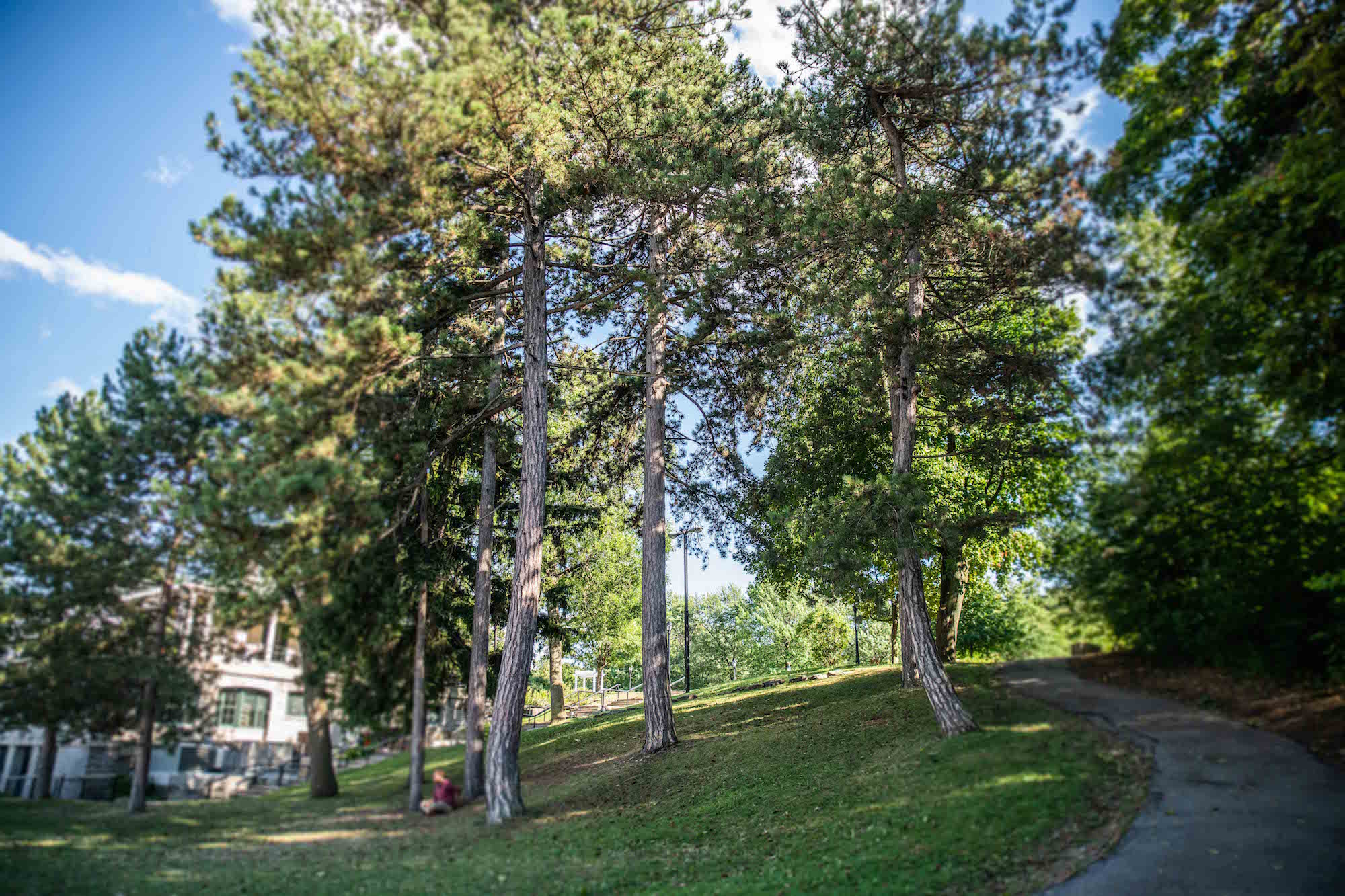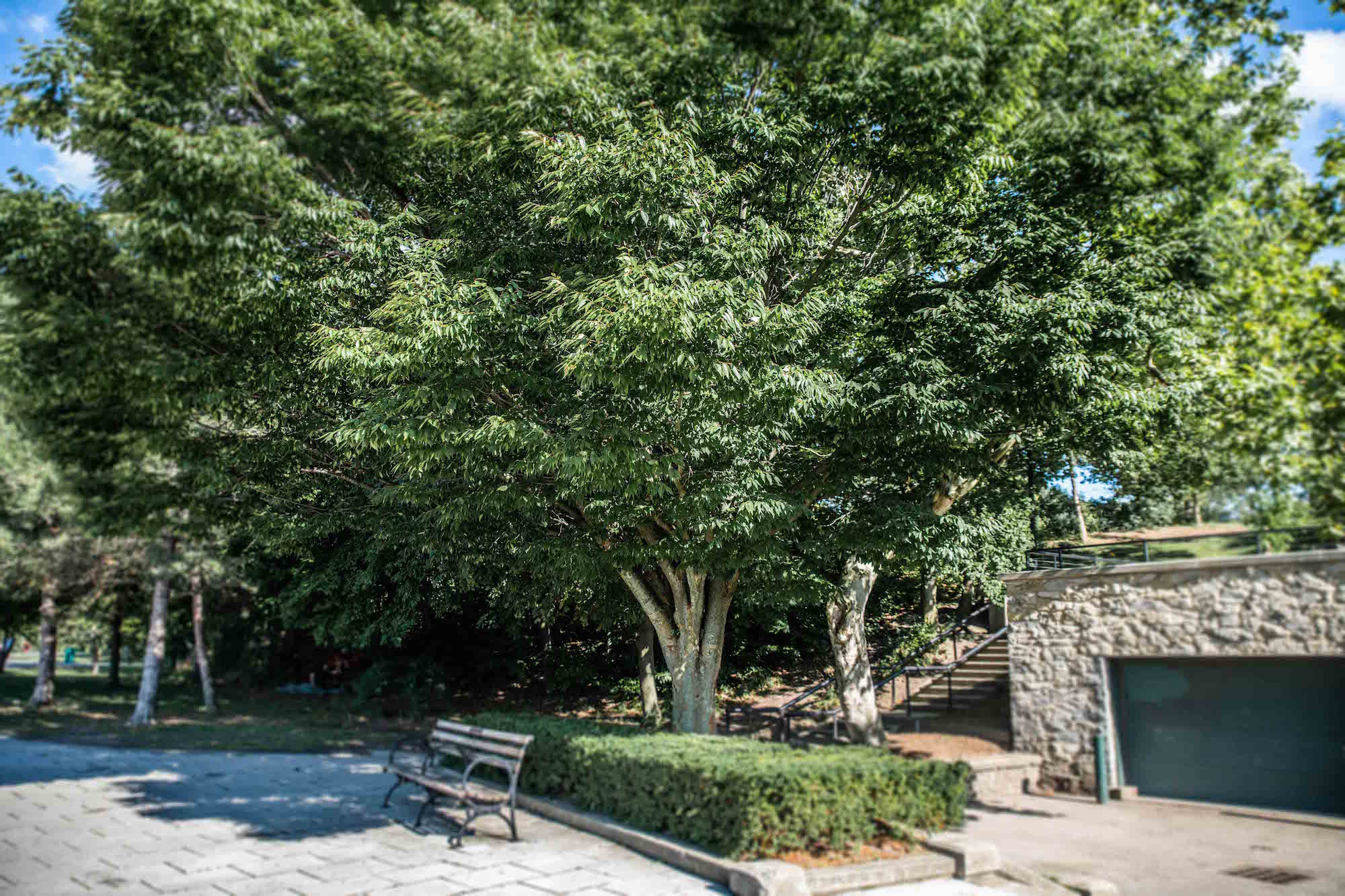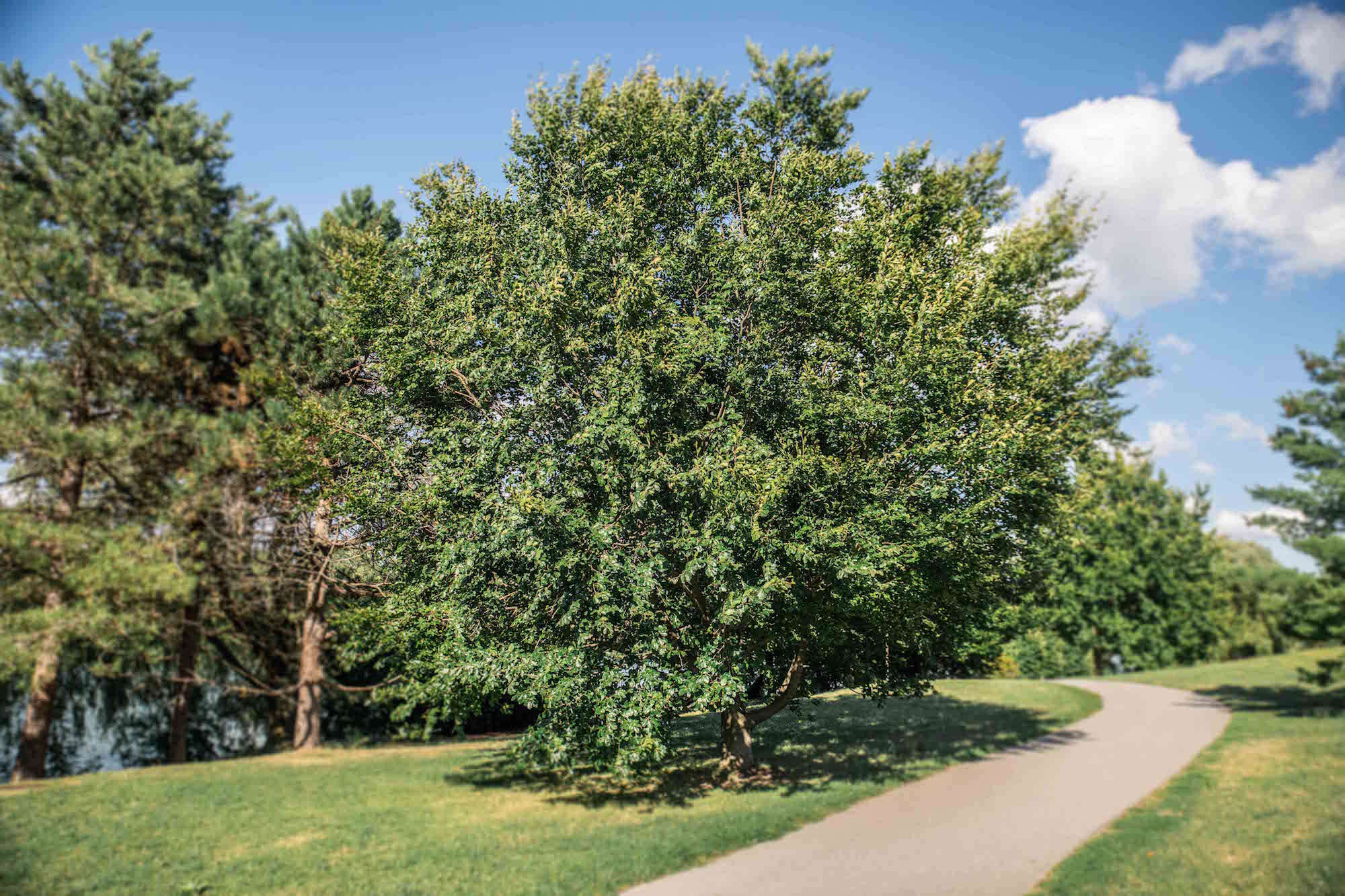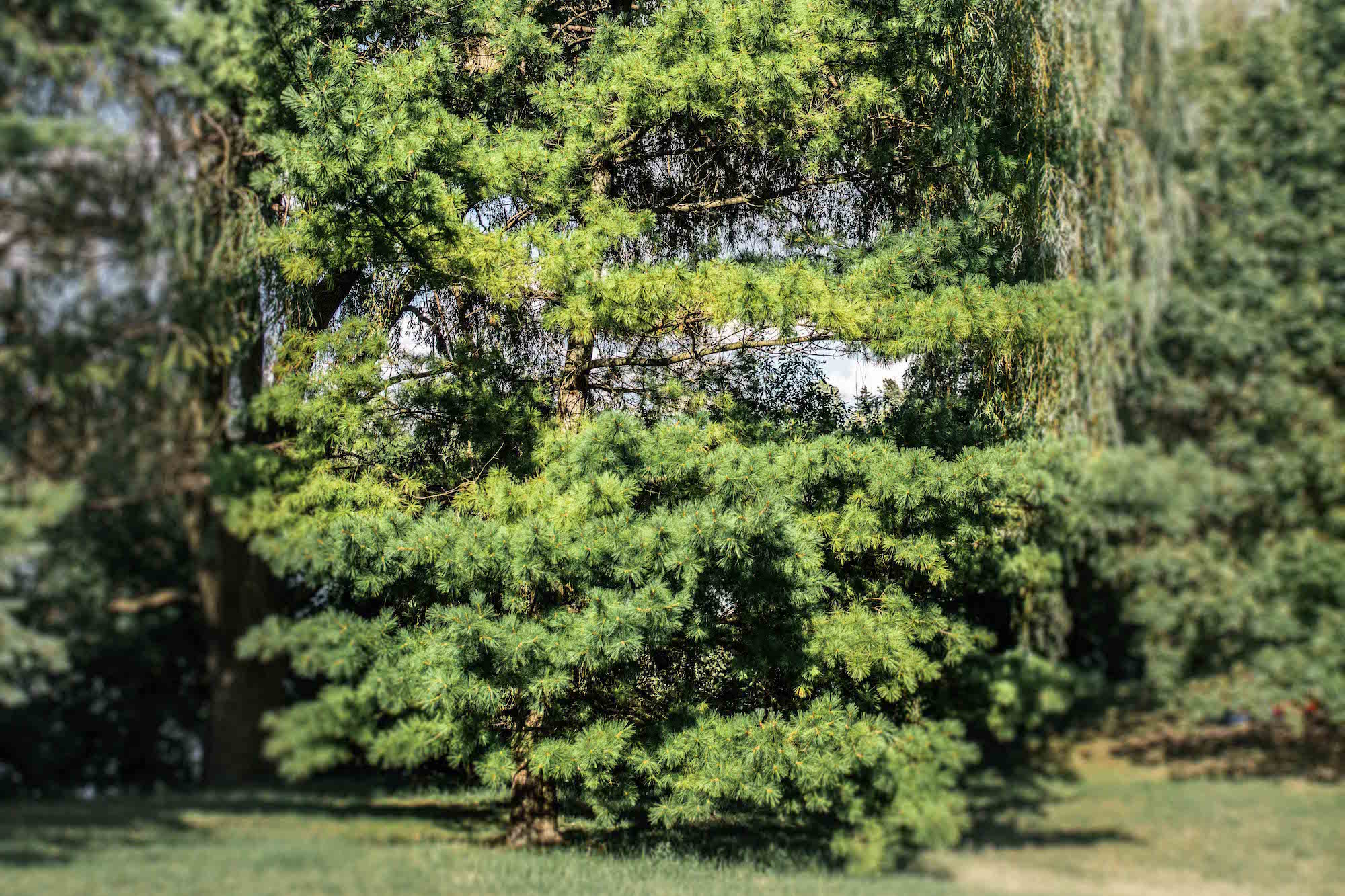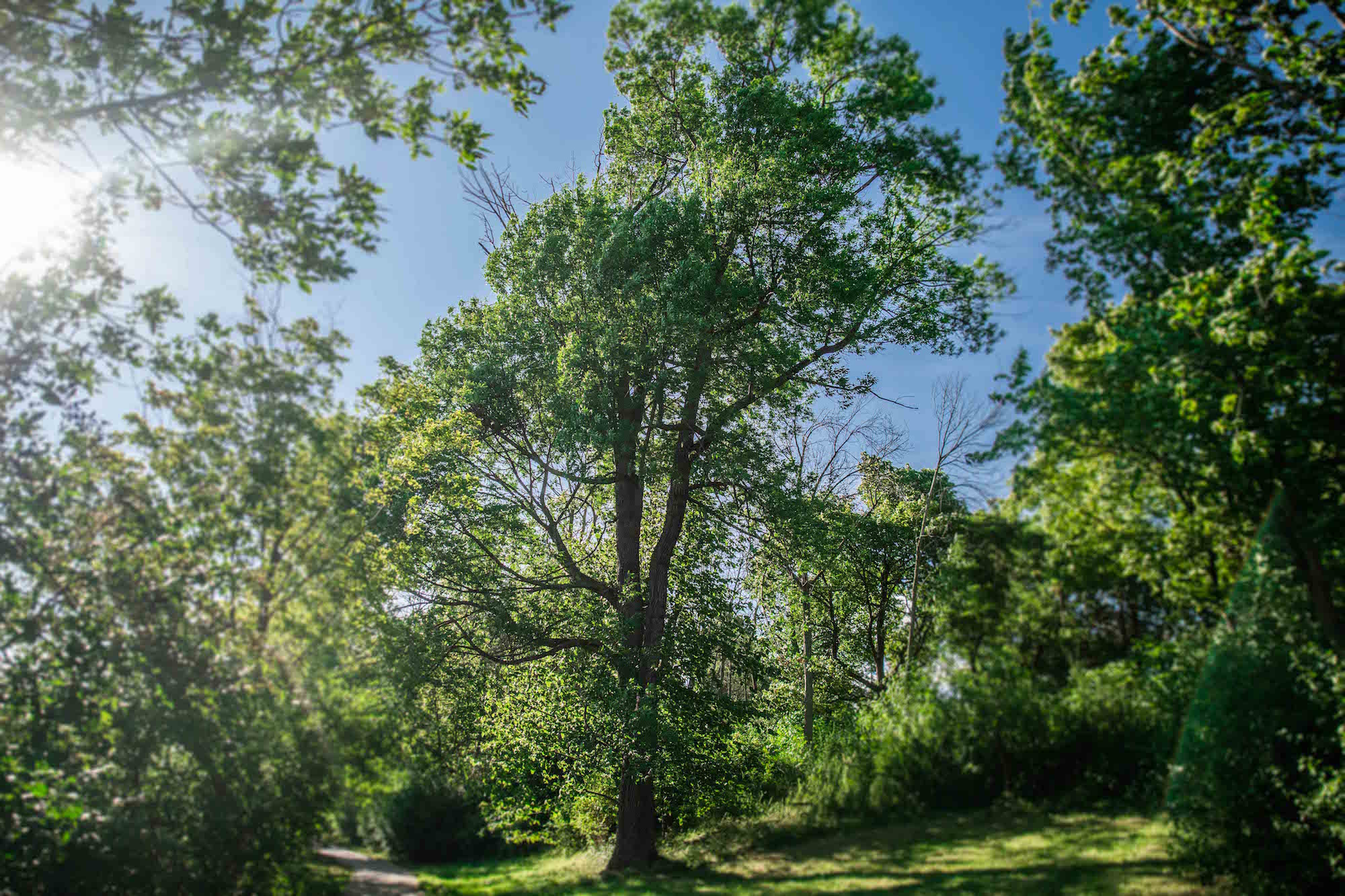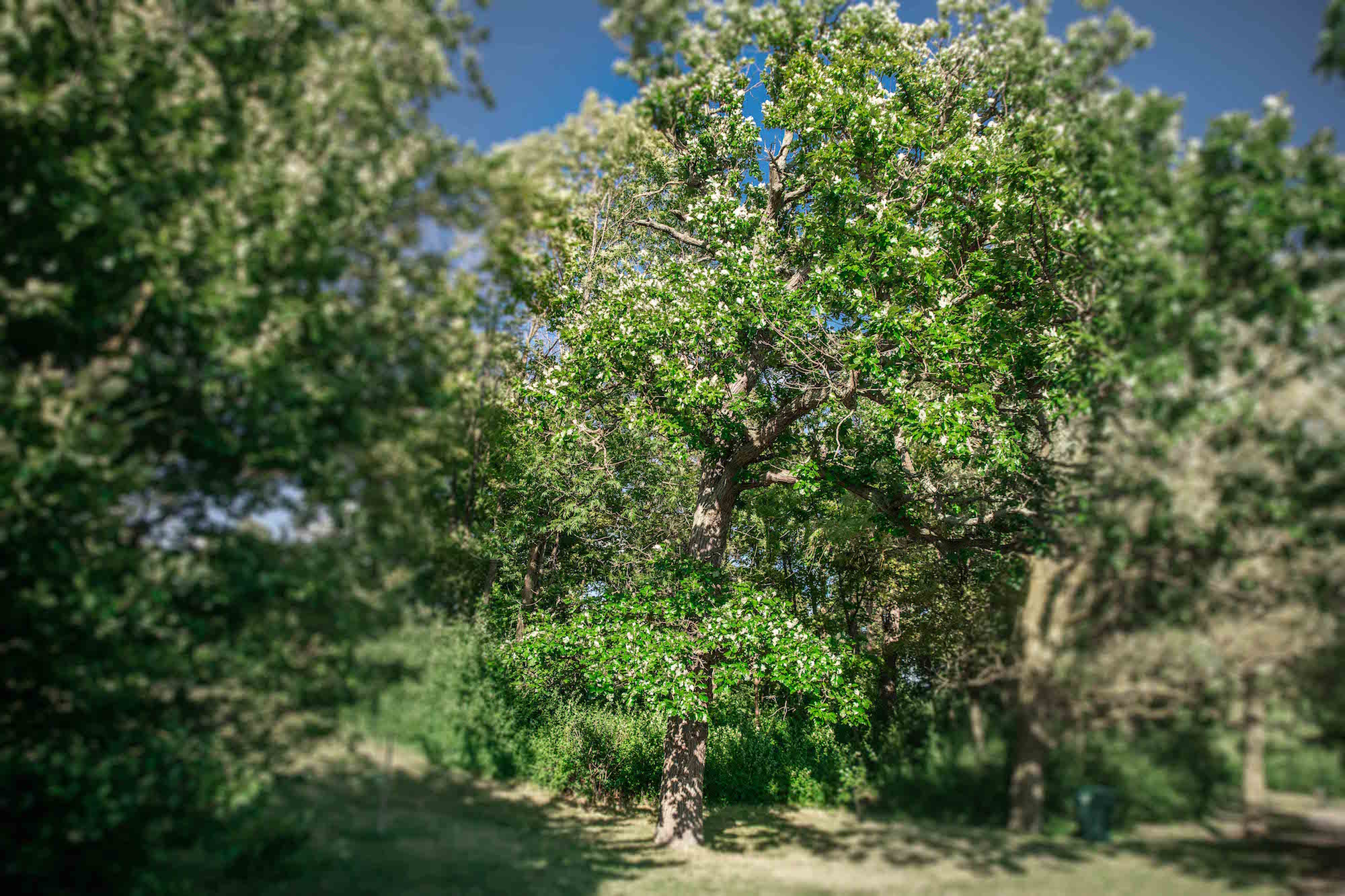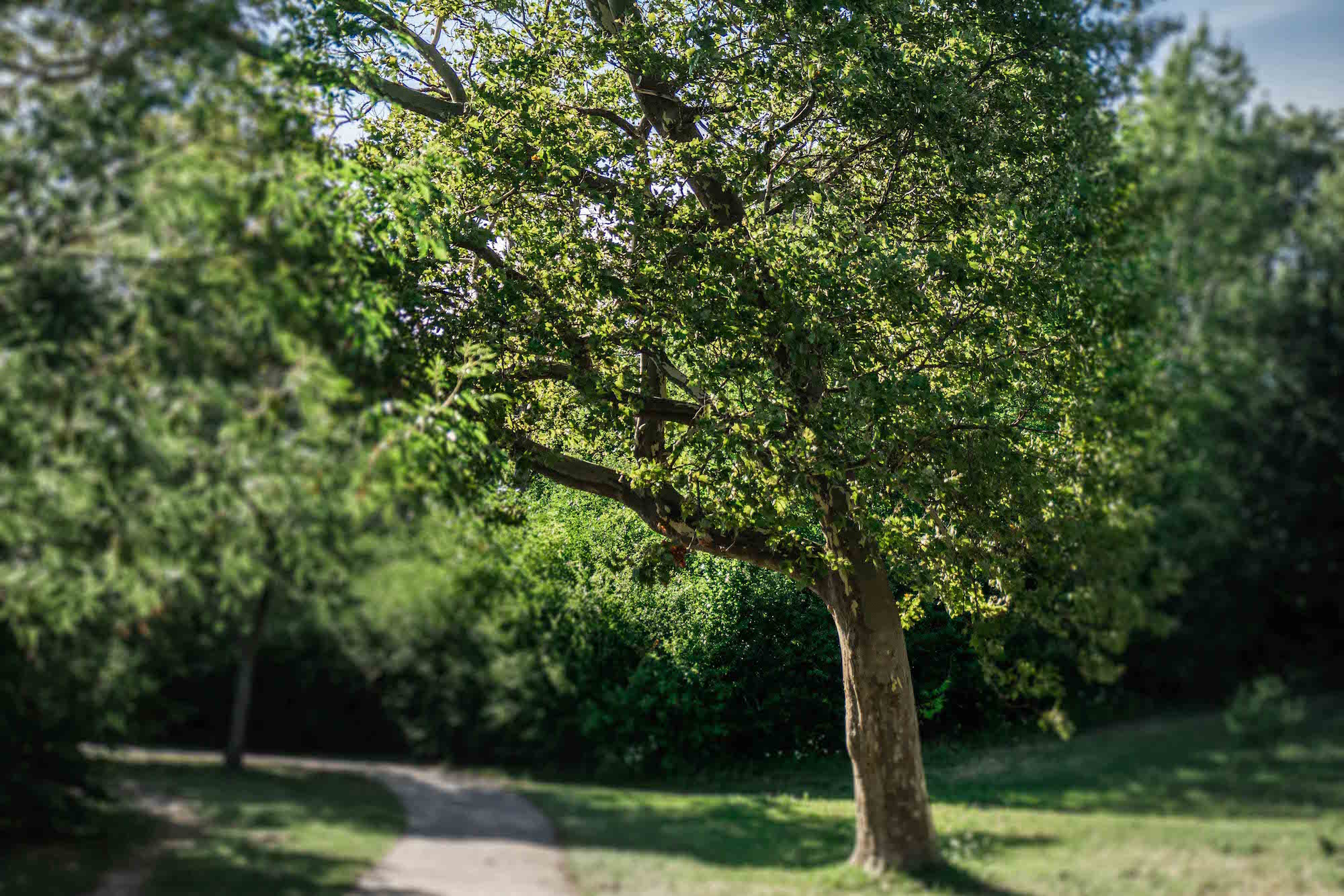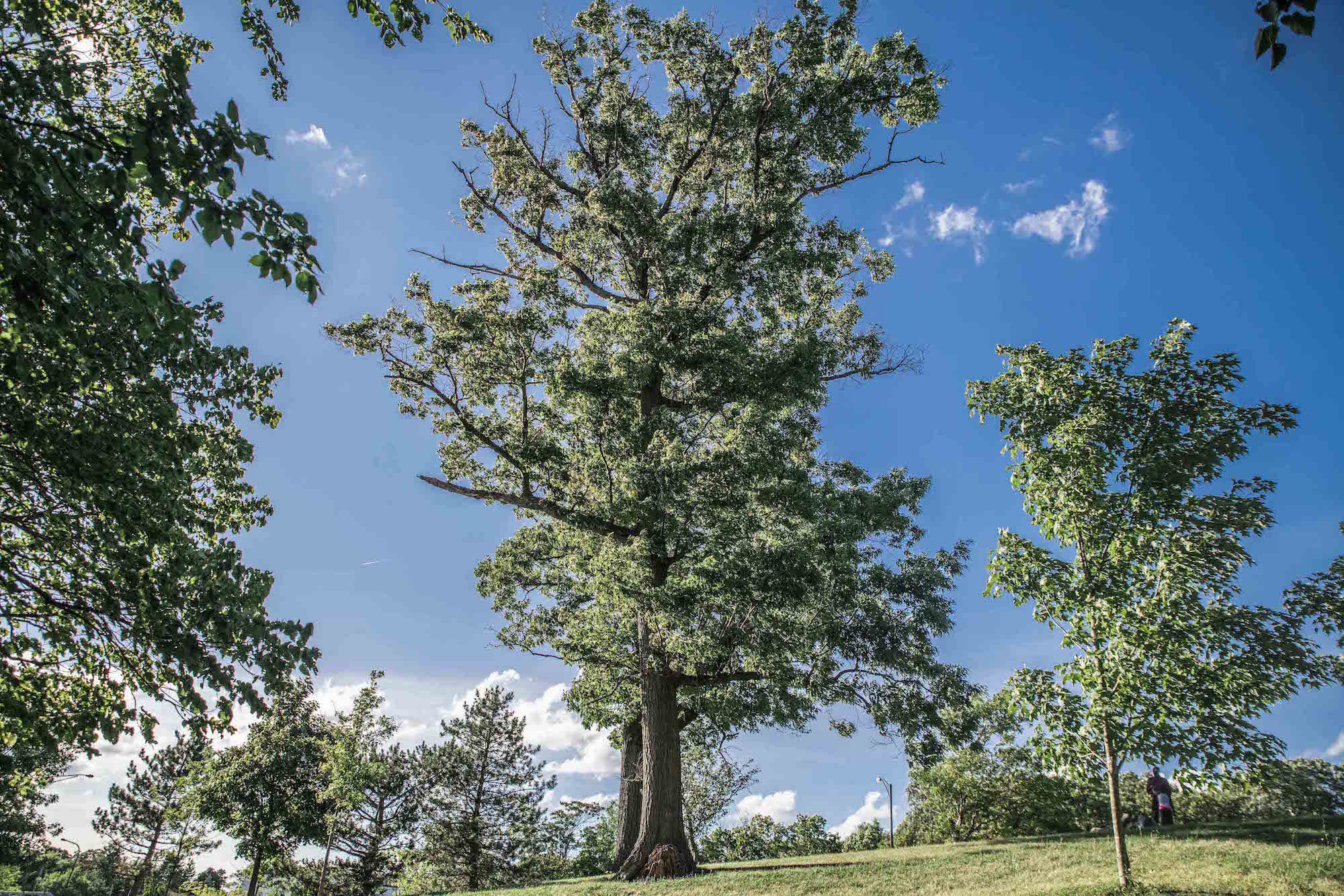A Tree Scavenger Hunt Around Delaware Park, presented by Univera Healthcare
There are 13 trees featured in this TREEventure! The following are 2 ways to begin exploring. To learn the characteristics of each tree, please scroll down.
Option 1: Do it online with the interactive map below
Option 2: Download and print out a PDF of the map
Download PDF Map
TREEventure también está disponible en Español.
TREEventure - Español
Interactive map to support you on your TREEventure
- Click on the Green arrow
- Click on each individual tree icon to find out more
Characteristics of the featured trees
Click on each thumbnail to view larger photo of each tree.
1. Crabapple, malus sylvestris
- The most famous of Crabapples are the Asian Crabapples species, which have been hybridized from many species. They are one of the most common planted flowering trees in America.
- Every May, a profusion of their white, pink, or rosy flowers decorate yards everywhere. Their fruit are usually sour or tasteless pea-sized or cherry-sized apples. However, the birds certainly like to eat them.
- The Japanese and Chinese developed their crabapples to produce ornamental flowers. In contrast, the Europeans developed the European Crabapple for its fruit, which became today’s beloved domesticated apple. Wild crabapples are native to our own country, but are rare in most areas.*
- Although quite tart when consumed raw, crabapples are edible! Their high pectin content makes them useful for cooking into jams and jellies. These cultivated varieties of crabapples have been bred to maximize their flower production and minimize the size and fleshiness of their fruit for more ornamental uses.
- Crabapples (Malus species) include about 25 different species of trees & shrubs native to temperate regions of North America, Europe, and Asia. Flowers vary from white to pink to deep red.
2. Black Pine, pinus nigra
- Also known as Austrian pine, this species was introduced to the United States in 1759 and over 217 million of them were planted during the nation’s Great Plains Shelterbelt Project that took place throughout the 1930’s.
- This species is very hardy and can tolerate the harsh soil / environmental conditions that exist within many cities.
3. Zelkova, zelkova serrata
- Native to Japan, this tree was introduced to the United States in 1862.
- It’s scientific name, Zelkova serrata refers to the leaf’s unique, serrated margin. It’s bark is typically greyish brown however at maturity can be somewhat exfoliating revealing patches of orange inner bark providing an attractive character.
4. Weeping Willow, salix babylonica
- Native Americans chewed on the bark and young twigs of these trees to help relieve headaches. It was later discovered that these components contain salicylic acid, the basis of modern aspirin.
- A ¼ cup of shredded twig bark steeped in 1 cup of sweetened, boiled water makes the same as two aspirin for headaches.*
- Thriving in along the shoreline, on a hot day, a mature willow tree can consume up to 100 gallons of water!
5. Norway Spruce, picea abies
- Rockefeller Center in New York City erects a Norway Spruce each Christmas next to the skating rink and decorates it for the holiday season.
- This tree comes from Europe. While it does grow in Norway, the name is a bit of a misnomer. This tree grew in Eurasia, the Black Forest and other parts of the continent long before making its way to Norway around 500 B.C.
- Known for its cold hardiness it is the most northern tree of Norway and eastern Russia. It can grow to nearly 200 feet tall in the wild. In Europe, it’s straight grained wood is used for cabinets and violins.*
6. European Beech, fagus sylvatica
- The beechnuts of this magnificent tree were food for prehistoric man and are still consumed today.
- Historians claim that the first written European literature was inscribed on Beech bark in Sanskrit. Though tempting, carving messages into the bark of beech trees can damage the living tissue of the tree leading to injury and death. Please just send a text message.
7. White Pine, pinus strobus
- Eastern white pine is important to wildlife, as the seeds are favored by black bears, rabbits, red squirrels and many birds in addition to providing nesting sites for birds such as woodpeckers, common grackles, mourning doves, chickadees and nuthatches.
- It’s soft needle foliage grows in clusters of five. The tree gets its name from its whitish-green not dark green foliage found on other pines. This is because its needles have a white line of wax down their length.*
- The tallest tree in the eastern North American forest, up to 200 feet, White Pine is the State Tree of Michigan and Maine. It was the prize lumber tree for building the sailboat masts for the British navy.*
8. Honeylocust, gleditsia triacanthos
- Native Honeylocust has the largest and most dangerous thorns of any American tree. However, botanist developed thorn less variety that are now the most commonly planted tree everywhere in yards and along streets in the Northeast.*
- With it’s high tolerance of urban stressors such as salt, soil compaction, and air pollution, Honey locust has been widely embraced and planted as a city street tree.
- Honeylocust is a member of the legume or bean family. The tree derives the name “Honey” from the sweet, honey-like substance found in its long, curly seed pods.
9. Green Ash, fraxinus pennsylvanica
- Ash trees are under attack from an invasive pest known as the Emerald Ash Borer. This tree is currently being treated bi-annually to protect it from the lethal insect.
- Ash wood is very strong & hard, making it a useful material to construct tool handles and baseball bats.
- It is called Green Ash because its leaflets are bright green on both sides, while White Ash leaves are whitened on their undersides.*
10. Bur Oak, quercus macrocarpa
- Bur Oak, like all Oaks, is slow growing but very long-lived (200-400 years)
- It’s “bur” name is from its fuzzy acorns, which are good to eat when roasted.*
- Its wood is durable and of high quality. It is commonly used for cabinetry, barrels, hardwood flooring and fence posts. Part of the white oak family, the wood’s pores are naturally plugged, making it suitable for building water-tight vessels. This differs from the red oak family, whose wood is rather porous.
11. London Plane, platanus acerifolia
- Resembling it’s parent tree, the American Sycamore, this tree can be distinguished by two features. The bark of London Plane appears more “coffee stained” than the creamy white color of Sycamore bark. The fruits, small ball-like structures, occur in pairs on London Planetrees but occur singly on Sycamores.
- There are a couple theories as to why the tree exfoliates it’s bark. Shedding bark can help the tree rid itself of soot and other pollutants that might accumulate over time. Another possibility is that the tree discards its outer bark as a protective measure against various pests and pathogens.
- London Planetree may be the first hybrid tree of garden origin. In 1637, the gardener of King Charles I, John Tradescant, discovered the hybrid. They never grow in the wild, unlike our native Sycamore.*
- The work “plane” in its name refers to the large flat (“planar”) leaves, which are maple-shaped and as large as 10 inches across.*
12. Red Maple, acer rubrum
- Red Maple is the state tree of Rhode Island
- Native to eastern North America, this tree has the greatest north–south range of any tree species living entirely in the eastern forests (Newfoundland to southern Florida).
- Its name leads it to be commonly misidentified as the Crimson King Norway maple with reddish purple leaves, the red in its name is actually in reference to abundant flower clusters which produce fruit of red samaras in late spring.
13. Red Oak, quercus rubra
- Red Oak is New Jersey’s State Tree, and is the most common oak in Western New York. It grows to 8’ in diameter, and up to 400 years old in places like Zoar Valley. The world champion Red Oak (11 feet in diameter!) grows in a Rochester backyard.*
- Red Oak acorns are a rich food for squirrels and other wildlife. However, its acorn nut is not edible for humans.*
- Red Oaks can be distinguished from White Oaks by looking at the leaves. Red Oaks have pointy, bristle tipped leaf lobes whereas White Oak has rounded lobes.
- Most deciduous trees lose their leaves in the winter but Red Oak leaves often persist through the season, giving the tree an interesting aesthetic through dormancy.
*Notes from A Walking Tour of Olmsted’s South Park Arboretum by Bruce and Libby Kershner. Published by BOPC. 2003.
Photos courtesy of Kelly Kazmierczak Photography




